Community News: Latest PEAR Releases (04.08.2019)
Latest PEAR Releases:
Latest PEAR Releases:
There are any number of things to love about WordPress. Chiefly among them is the fact that it’s open source and free to use in any way you like.
For web designers and their clients, this keeps costs down and lowers the barrier to building a first-class website. For plugin and theme authors, it provides an opportunity to tap into and benefit from a large, existing marketplace. Everyone’s a winner, right?
Well, it’s not always that simple. There are times when the various interests who have a stake in WordPress collide with a difference of opinion (see: Gutenberg). And it seems that we’ve hit another one of those points of contention: The WordPress dashboard.
Recently, there’s been some fervor over a “feature” in version 7.1 of Jetpack (since removed, as of version 7.2.1), the venerable Swiss-Army-Knife of a plugin by Automattic (a driving force behind WordPress) that offers a ton of various functionality. The plugin had started to promote its own paid products on the WordPress plugin search screen, placing itself first in line over everyone else.
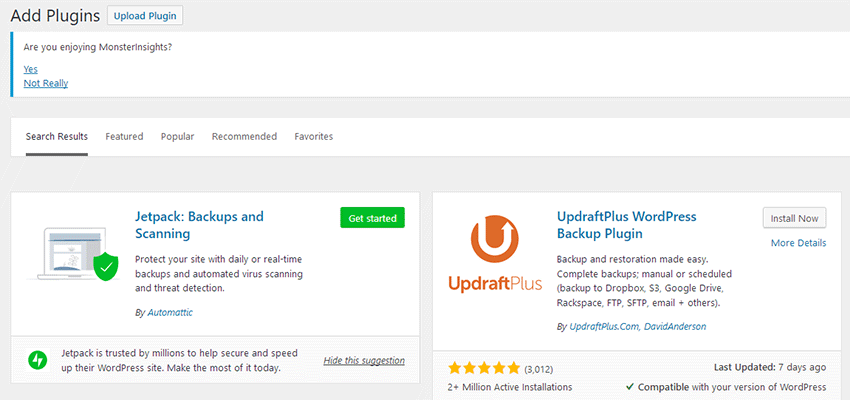
Funny enough, this did not go unnoticed by members of the community (which likely led to its quick demise). There was fierce debate on Twitter, with Gravity Forms founder Carl Hancock declaring (in a since-deleted tweet), “Automattic is setting the precedence that hijacking plugin search results is an acceptable way to game user discovery problems & outrank competitors.”
While this change created a stir, it’s hardly the first time a plugin (Jetpack included) has forced its way onto our screens. For example, sites with Jetpack installed have been seeing ads for their backup services on the plugin upgrade screen for quite some time.
And they are far from the only guilty party. Plugins both free and commercial are littering the dashboard. Sometimes, it’s just a friendly message regarding a maintenance-related task. More often, they’re asking for donations, reviews, upgrades and various other annoyances. The “good” ones are easily dismissed, the not-so-good ones keep showing up time and again, offering reason enough to stop usage of the product.
Yet, when you take an open piece of software that anyone can tap into, this all seems like it was inevitable.
Like every other industry, the WordPress marketplace is highly competitive. It seems like every theme and plugin has several direct competitors, and everyone is looking to get their product to the front of the pack. Even web hosts have joined in the fun.
And to be blunt, the WordPress dashboard is a prime place to get your message across. It’s a captive audience and one that developers know is interested in their product (because, well, they’ve already installed at least one of them on their site).
For those that offer completely free products, dashboard notifications can serve as a way to gain that extra bit of income that keeps development moving forward. For freemium products with pro versions and other upgrades, it’s a path to keeping site owners in your ecosystem for the long term.
Yes, it can be frustrating to deal with. The messages can often be tacky and much too prevalent (and borderline ridiculous on a Multisite install) – particularly when so many products are utilizing them. But can we really say that we’re at all surprised by this behavior?
Virtually every medium known to man has, at some point, become polluted with similar annoyances. Newspapers, television and radio all have their offenders. Websites have seen all number of intrusive ad gimmicks. So, perhaps our CMS of choice was just next on the hit list.
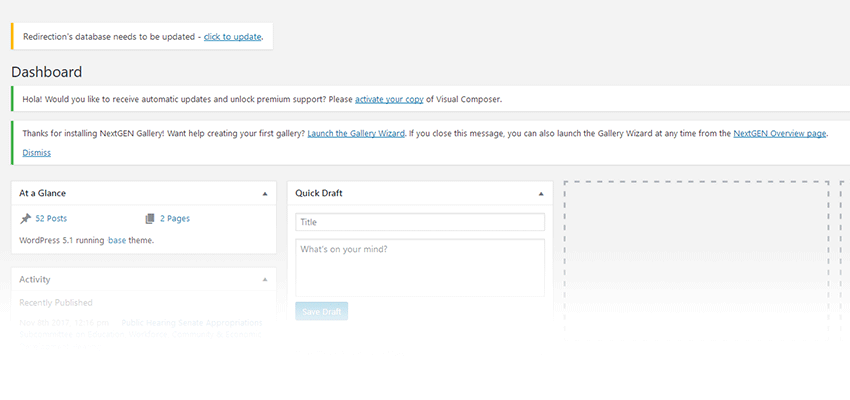
Sadly, whatever innocence we may have projected onto WordPress is long gone. It may be a free tool, but it’s used by many of us to, in one way or another, make money. As such, there are going to be people who are looking to take advantage of the platform – both on the front and back ends – to grab that extra attention and cash.
What can we do about it? Well, we might get away with avoiding some of the worst offenders in this area. Although, that’s not necessarily going to be good for the functionality of our sites. Unfortunately, the more products that start using these tactics, the more compelled others will be to follow that same path.
Another option is to get in touch with developers and tell them that you don’t appreciate the constant messaging. Sweeping changes across the industry may not happen immediately, but we can try to influence people one at a time (it seemed to influence Jetpack’s change of heart). The hope is that the practice eventually be comes so frowned upon, developers don’t dare tread there in the future.
It could also be that niche plugins, such as Disable admin notices individually, will become must-have additions for those who spend a lot of time working within WordPress. Much like adblocker software has become a big deal in the browser world, a similar industry may (excuse the term) pop up to try and save us from CMS-related aggravation.
Beyond that, it’s a matter of deciding what we are (or aren’t) willing to put up with. WordPress still does amazing things and is a driving-force behind plenty of careers. So, maybe this is just a small price to pay in order to stay in the game. Ultimately, that’s something for each of us to decide.
The post Is Nothing Sacred? The Pollution of the WordPress Dashboard appeared first on Speckyboy Web Design Magazine.
DOES IT WORK?Further studies needed to determine effects, writes DÓNAL O’MATHÚNA
GARCINIA SPECIES are widely used in Thai and Indian cuisine. The fruit, especially from Garcinia cambogia, has developed a reputation among those seeking to lose weight and build muscle.
Extracts of the fruit contain up to 50 per cent hydroxycitric acid, which is believed to be the active ingredient.
Earlier this year, the Food Safety Authority of Ireland (FSAI) issued a product alert, calling on consumers to discontinue using all “Hydroxycut’’ products.
The product name comes from hydroxycitric acid, which is added to some of the products in the form of Garcinia cambogia. The FSAI called on retailers not to sell these products, but they can still be found on Irish websites and remain available elsewhere.
The FSAI alert is based on recent case reports suggesting a link between Hydroxycut products and liver damage. The Canadian manufacturer voluntarily withdrew its products from the US market after the Food and Drug Administration (FDA) issued a consumer warning.
The weight-loss properties of hydroxycitric acid have been studied since the 1960s. Laboratory tests have shown that it inhibits an enzyme involved in producing body fat from other foods. Research also suggested that hydroxycitric acid may suppress appetite and reduce food intake in animals.
These results led to a series of small human studies in the early 1990s which produced contradictory results. One of the largest randomised controlled trials of hydroxycitric acid to date was published in 1998.
More than 130 overweight men and women took either 1.5g hydroxycitric acid (3g Garcinia cambogia) daily or placebo while also eating a high-fibre, low-calorie diet. Both groups lost weight during the study, but the two groups did not differ in the amount of weight lost or their body fat. Some have claimed that the diet may have interfered with the effects of the Garcinia.
At this point, close to a dozen randomised controlled trials have been conducted with Garcinia, although some of them have used it in combination with other herbs. Some of the studies have produced positive effects, although the quality of the research was sometimes poor.
The safety of hydroxycitric acid has been evaluated in recent studies, in addition to the long traditional use of Garcinia. In general, the herb and food supplements have not produced adverse effects and are generally regarded as safe at recommended doses.
Then several case reports were published in the medical literature of liver damage following consumption of Hydroxycut products. In 2009, the FDA reported that it had received 23 cases of serious health effects from these products.
The damage ranged from jaundice to liver failure requiring transplantation and one death. Although the number of cases is low, their seriousness led to the consumer alerts mentioned above and subsequent product withdrawals.
Determining the precise cause of the liver damage is difficult. Hydroxycut contains a number of herbs and other agents, with different mixtures used in different products. Some formulations do not contain any Garcinia cambogia.
The case reports have not been able to identify which ingredient, or combination of ingredients, may have led to the liver damage.
Further research is needed to understand the precise source of these problems.
Hydroxycitric acid from Garcinia cambogia shows some potential as a weight-loss product. However, the available studies are variable in their quality and the types of products tested. More studies are needed to demonstrate whether or not the products are effective and safe.
The reports of potential liver damage associated with Hydroxycut products point to the need for careful evaluation and monitoring of all herbal remedies.
When products contain several herbs, the precise source of positive or negative effects is difficult to determine. Given this uncertainty, and the complexity of weight loss, people should rely on the standard, proven methods of weight loss: reduce calorie intake, increase physical activity and find others to support your efforts.
While some supplements may be helpful, Hydroxycut should be avoided.
Dónal O’Mathúna has a PhD in pharmacy, researching herbal remedies, and an MA in bioethics, and is a senior lecturer in the School of Nursing, Dublin City University. He is author of Alternative Medicine: The Christian Handbook, Updated and Expanded Edition, Zondervan, 2007
SINGAPORE – Weight-loss product beFIT Total Garcinia Cambogia contains an undeclared banned ingredient, and could be toxic, the Health Sciences Authority (HSA) has warned.
HSA says that the illegal weight-loss product, which is sold online, contains banned substances sibutramine and phenolphthalein.
Sibutramine has been banned in Singapore since October 2010 due to “serious safety concerns”, HSA said.
The agency added that the “very high level” of sibutramine detected in beFIT Total Garcinia Cambogia could lead to heart attacks and fits.
The substance may also cause serious side effects, including high blood pressure, increased heart rate and irregular heartbeats. Changes in mood such as anxiety, depression and mood swings have also been reported.
Phenolphthalein has been used medicinally as a laxative but is no longer in use in Singapore. It may cause rashes, abdominal cramps, breathing difficulties, kidney disorders and has been found in animal studies to be associated with cancer.
The seller of the product is assisting HSA with its investigations.
The product, which is sold on local websites and social media platforms, supposedly contains the extract of garcinia cambogia, a fruit similar to tamarind.
This is touted as the main ingredient in the pills that helps to control one’s appetite and inhibits “fat production”.
“Illegal health products such as ‘beFIT Total Garcinia Cambogia’ are generally produced under poor manufacturing conditions with no quality control,” HSA said in its statement.
“As with ‘beFIT Total Garcinia Cambogia’, the hidden undeclared ingredients can be present in high quantities, which can pose serious health hazards and even lead to death.”
The agency advised members of the public who are consuming the product to stop taking it immediately and consult a doctor if they feel unwell or are concerned about their health.
Members of the public who have any information on the sale and supply of beFIT Total Garcinia Cambogia or other illegal products may contact HSA at 68663485 during office hours or email: hsa_is@hsa.gov.sg.
You can visit www.healthdangers.sg to learn more about the dangers of buying illegal health products from dubious sources.
Article source: https://www.straitstimes.com/singapore/health/illegal-weight-loss-product-befit-total-garcinia-cambogia-contains-banned
Sales of the recalled product through the website www.swissclinic.no have been halted, according to a warning on the authority Mattilsynet’s website.
Garcinia cambigia is toxic to the testicles because of its content of hydroxycitric acid (HCA) – a derivative of citric acid found in many tropical fruits.
According to the harmonised list of botanicals put forward by Belgium, Italy and France, BELFRIT, Garcinia cambigia is “OK” but levels of HAC “must be determined”.

The plant’s entry on the list referenced a 2005 study from the Japanese National Institute of Health and Nutrition using rats, which suggested diets containing 102 millimoles of HCA per kilogram or more (778 and 1244 mg HCA per kg body weight per day, respectively) caused “potent testicular atrophy and toxicity”.
This effect was not seen with diets containing 51 mmol HCA/kg or less (389 mg HCA per kg body weight per day).
The paper “tentatively” pointed to HCA as the cause of the negative health effect, but added: “This is the first published report of the testicular toxicity of HCA-containing Garcinia cambogia, and therefore, we do not currently know which of the constituents of this preparation is responsible for the toxicity.”
Garcinia cambogia, also known as Malabar tamarind, is a plant native to Southeast Asia used traditionally for its dried rind as a food preservative, flavouring agent and carminative but it is increasingly popular as a weight loss ingredient for supplements in developed countries.
Holland Barrett sells a supplement containing 300 mg of Garcinia cambogia powder per two-capsule serving.
The UK Amazon site also sells such supplements with content around 500 mg Garcinia cambogia per capsule.
HCA, the main acid in its fruit rinds, has been shown to suppress appetite and body fat accumulation in animal experiments.
An alert issued on the EU’s Rapid Alert System for Food and Feed (RASFF) showed the Swiss Clinic product had come from Sweden, with Denmark raising the alarm.
Article source: https://www.nutraingredients.com/Article/2015/10/01/Weight-loss-herbal-blocked-over-testicle-damage-fear
A Gutenburg-Powered Newsletter – Learn the process behind converting the CSS-Tricks newsletter to use the new WordPress block editor.
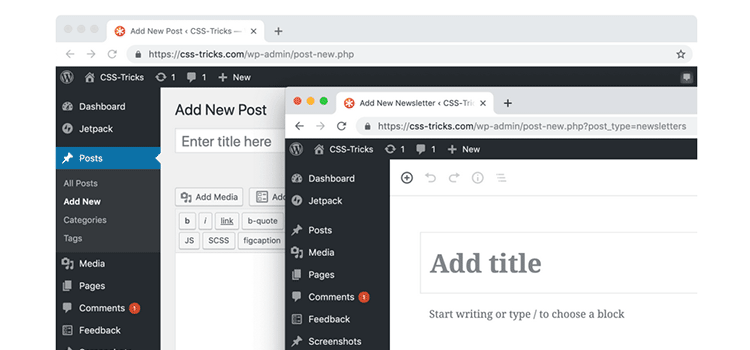
Maizzle – A framework for rapidly developing email prototypes with CSS.

Website Audit Checklist – A simple checklist to audit your site for proper formatting, performance, accessibility, and security.
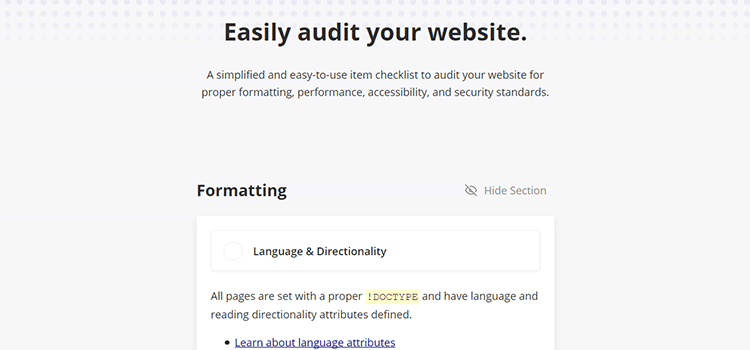
Stop using so many divs! An intro to semantic HTML – Why divs should be a container of “last resort”.
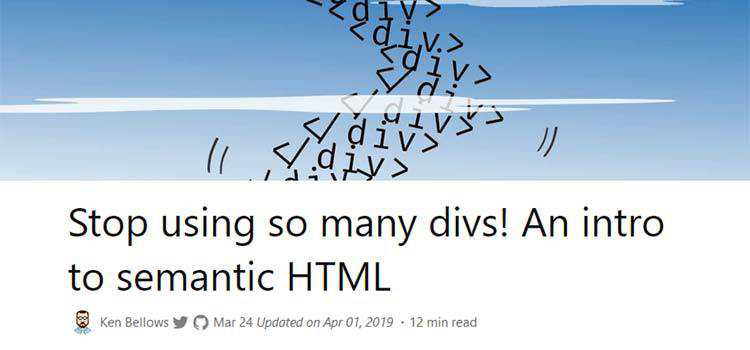
Cool uses of the ::before and ::after pseudoelements – You might be surprised at how much pseudoelements are capable of.

Clicking Around: The Use of Circular Mouse Cursors – How this small detail can help to create a seamless UX.
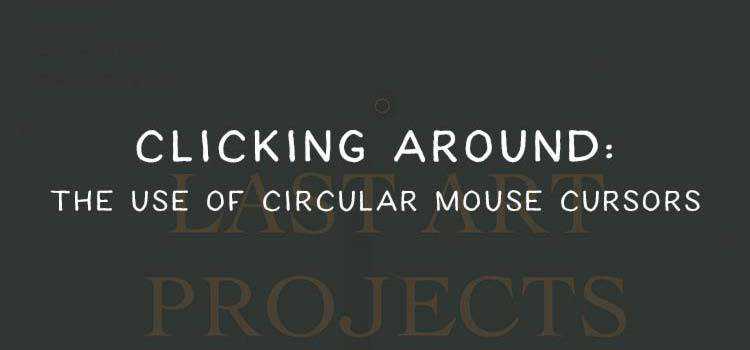
WinXP – Recreating the iconic Windows XP in your browser.

Tone.js – A framework for creating interactive music in the browser.
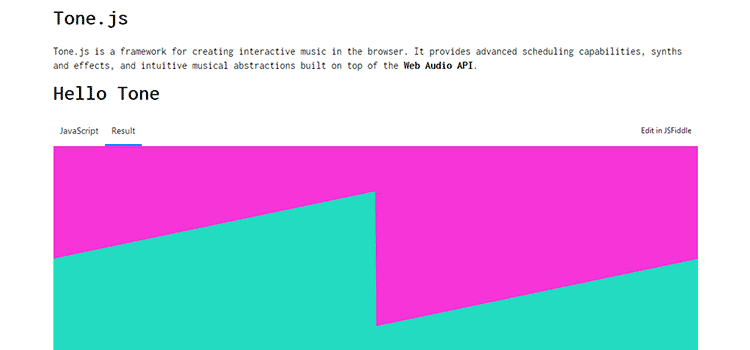
The Design of Apple’s Credit Card – A look behind the uniqueness of Apple Card.

How To Organize Files In A Design Agency – Learn how a world-class agency organizes their files.

Lint for Sketch – A Sketch tool to validate your designs against your own defined design guidelines.

100% Responsive Typography System using a Modular Scale – Create a smooth typographic scale that looks great on every device.
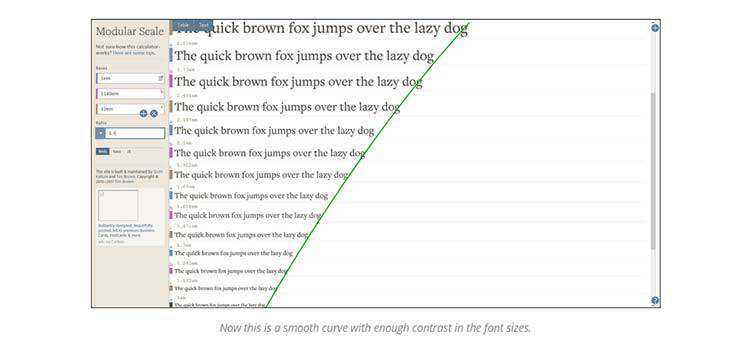
The 20 Best Free WordPress Portfolio Themes for Creatives – Build up your portfolio in style with one of these free themes.

How To Use Spaces In Web Design With Gestalt Principles – Telling a story through the use of space.
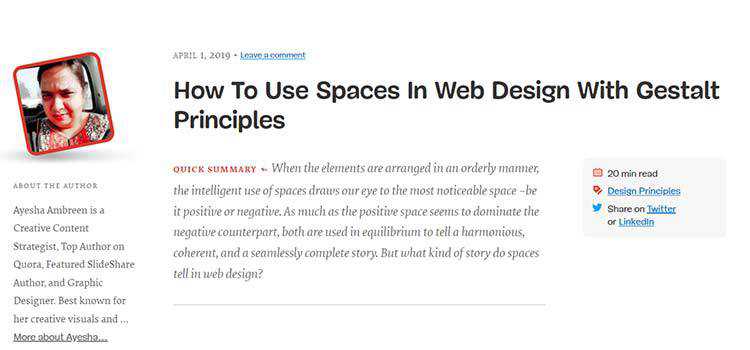
Form Validation in Under an Hour with Vuelidate – How to leverage Vue.js to quickly validate forms.

Don’t Shortchange Yourself When Inheriting a Website – You just never know what you’ll find when inheriting a website – charge accordingly.

Editor.js – A free, next generation block editor app.

Write – Free UI Kit for Sketch and Adobe XD – A free kit that includes 15 iOS app screens.
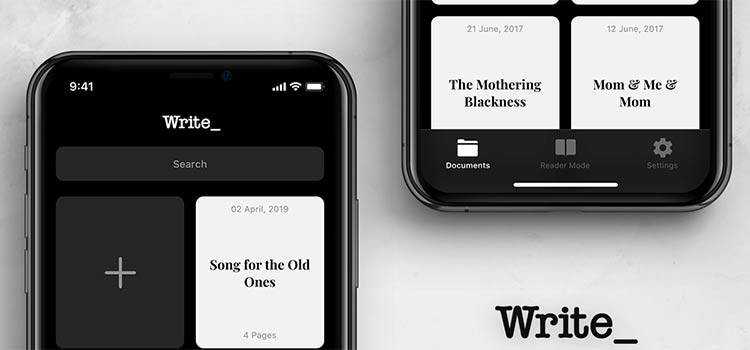
Follow Speckyboy on Twitter or Facebook for a daily does of web design resources and freebies.
The post Weekly News for Designers № 482 appeared first on Speckyboy Web Design Magazine.
Sales of the recalled product through the website www.swissclinic.no have been halted, according to a warning on the authority Mattilsynet’s website.
Garcinia cambigia is toxic to the testicles because of its content of hydroxycitric acid (HCA) – a derivative of citric acid found in many tropical fruits.
According to the harmonised list of botanicals put forward by Belgium, Italy and France, BELFRIT, Garcinia cambigia is “OK” but levels of HAC “must be determined”.

The plant’s entry on the list referenced a 2005 study from the Japanese National Institute of Health and Nutrition using rats, which suggested diets containing 102 millimoles of HCA per kilogram or more (778 and 1244 mg HCA per kg body weight per day, respectively) caused “potent testicular atrophy and toxicity”.
This effect was not seen with diets containing 51 mmol HCA/kg or less (389 mg HCA per kg body weight per day).
The paper “tentatively” pointed to HCA as the cause of the negative health effect, but added: “This is the first published report of the testicular toxicity of HCA-containing Garcinia cambogia, and therefore, we do not currently know which of the constituents of this preparation is responsible for the toxicity.”
Garcinia cambogia, also known as Malabar tamarind, is a plant native to Southeast Asia used traditionally for its dried rind as a food preservative, flavouring agent and carminative but it is increasingly popular as a weight loss ingredient for supplements in developed countries.
Holland Barrett sells a supplement containing 300 mg of Garcinia cambogia powder per two-capsule serving.
The UK Amazon site also sells such supplements with content around 500 mg Garcinia cambogia per capsule.
HCA, the main acid in its fruit rinds, has been shown to suppress appetite and body fat accumulation in animal experiments.
An alert issued on the EU’s Rapid Alert System for Food and Feed (RASFF) showed the Swiss Clinic product had come from Sweden, with Denmark raising the alarm.
Positive and greater weight losses were found in some studies, but this effect is suppressed when looking at all of the studies combined.
With respect to other health benefits from taking this supplement, the evidence to suggest it can improve blood cholesterol levels is lacking.
Most importantly, the product safety profile of Garcinia Cambogia has been adequately tested and there appear to be no issues.
Some complementary medicines have been found to contribute to improved health outcomes, through increased efficacy and cost-effectiveness. However, if there is to be a role for such complementary and alternative weight-loss products and medicines, we must build upon the evidence to investigate whether these increasingly popular products are a viable treatment option.
A recent Obesity Australia and Price Waterhouse Coopers report found obesity cost Australia A$8.6 billion in 2011-2012, with the indirect costs far higher. We must establish whether complementary medicines have a role to play in preventing and treating obesity. If we take no action to reduce obesity rates, an additional 2.4 million people will become obese at a cost of $87.7 billion over 10 years.